-
-
-
-
-
-
About the bikes - Z1
-
-
-
-
  |
|
"The following content is from www.kawasakiz1.com and is reproduced with the permission of Paul Mercer. All photographs are subject to copyright of the respective owners who are mentioned on Paul's website."

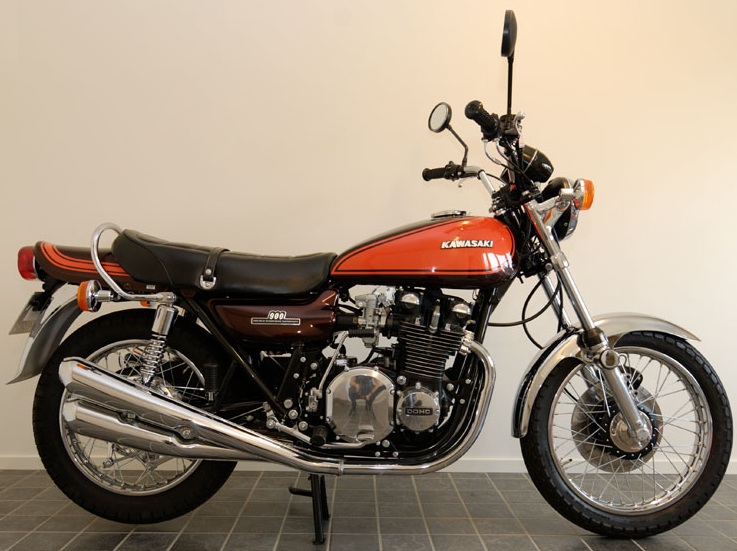
The Kawasaki Z1 was simply amazing when it was first introduced in 1972 and is still amazing today. It has become one of the most iconic of classic Japanese motorcycles.
It may not be as fast or handle as well as modern motorcycles of similar capacity, however there is something about the timeless styling of the Z1 that went on to influence many motorcycles thereafter.
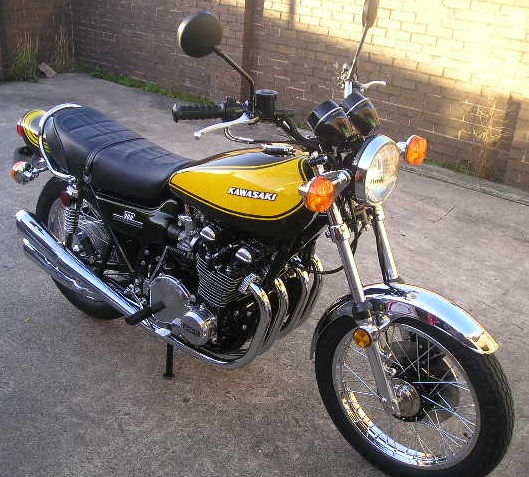
For the UK and Europe, Kawasaki produced the Z1 in two colour schemes. These were Candy Orange / Brown and Candy Yellow / Green.
Candy Orange / Brown was the most popular option and was the only option for the USA.
In Kawasaki's description of the Z1 colour schemes, the base colour was shown after the secondary colour of the stripes and tank panel.
 The fuel tank's base colour was contrasted with a large panel in the secondary colour covering most of the tank's side profile.
The fuel tank's base colour was contrasted with a large panel in the secondary colour covering most of the tank's side profile.
The panels on each side of the tank were edged at the top and bottom by a thin stripe, also in the secondary colour.
The panels and stripes from each side of the tank merged at the top of the tank just ahead of the chrome fuel filler cap.
The KAWASAKI badges on the fuel tank had upper case lettering in white, surrounded by chrome, and set on a black background. The badges were 155mm long.
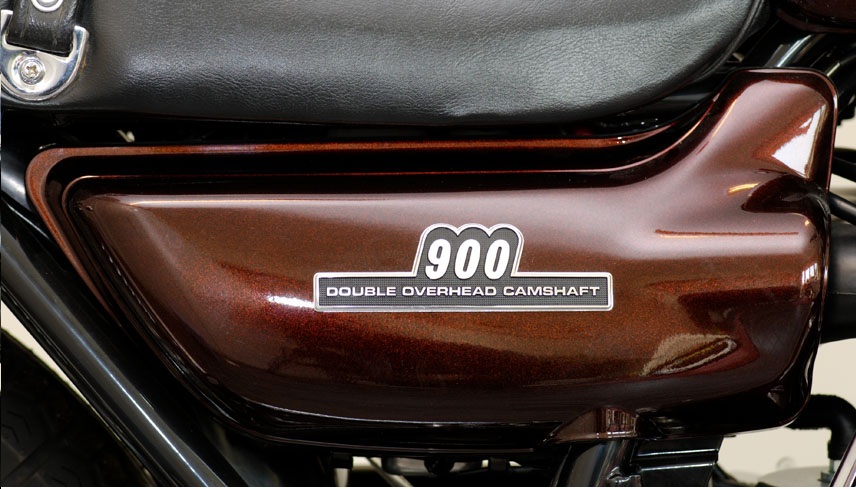
The side panels were in the base colour and the panel badges had the legend '900 DOUBLE OVERHEAD CAMSHAFT'.
The numbers were white and edged in chrome while the letters were just chrome. The numbers and letters were then set on a black background with a chrome surround.
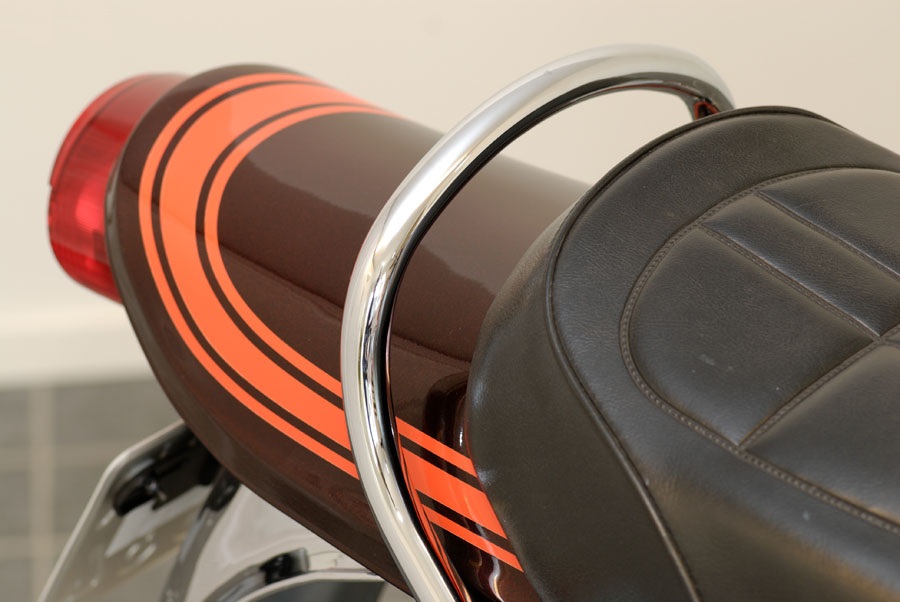
The Z1 tailpiece was in the base colour. There were three stripes in the secondary colour, the middle stripe being broader than the outer stripes. The stipes ran along the bottom edge of each side of the tailpiece and then curved up and over the top at the rear to meet in the middle. A chromed passenger grab rail complemented the design of the tailpiece.
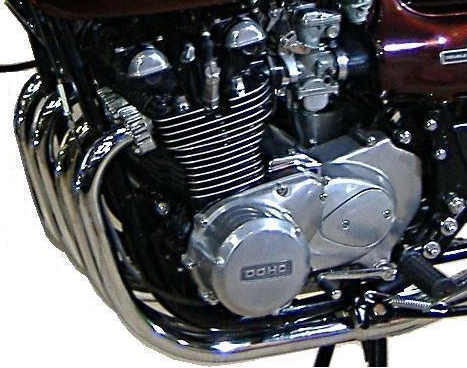 The heart of the Z1 was the 903cc four cylinder double overhead camshaft engine. The bore and stroke were 'square' at 66mm. The engine produced 82 bhp, phenomenal in 1972.
The heart of the Z1 was the 903cc four cylinder double overhead camshaft engine. The bore and stroke were 'square' at 66mm. The engine produced 82 bhp, phenomenal in 1972.
The crankcase, cylinder block and cylinder head were painted in black. The outer edge of the cooling fins on the front and sides of the cylinder block and head were a contrasting bare metal finish.
The Z1 had four 28mm Mikuni carburettors.
The alternator cover on the left side of the engine, and the ignition points cover on the right side were both finished in polished alloy. Both had the legend DOHC in silver lettering with a black background.
The large clutch plate cover on the right hand side was also finished in polished alloy as was the outer front sprocket cover on the left hand side.
Also in polished alloy were the top half of the camshaft end caps and the top covers and float bowls from the outer two carburettors.
The Z1 had a five speed gearbox operated by a left foot gear lever in a one down, four up pattern. Final drive was by chain. A drive chain lubrication system was used. This comprised of an oil tank behind the left side panel and an oil pump on the left side of the gearbox by the clutch adjuster.
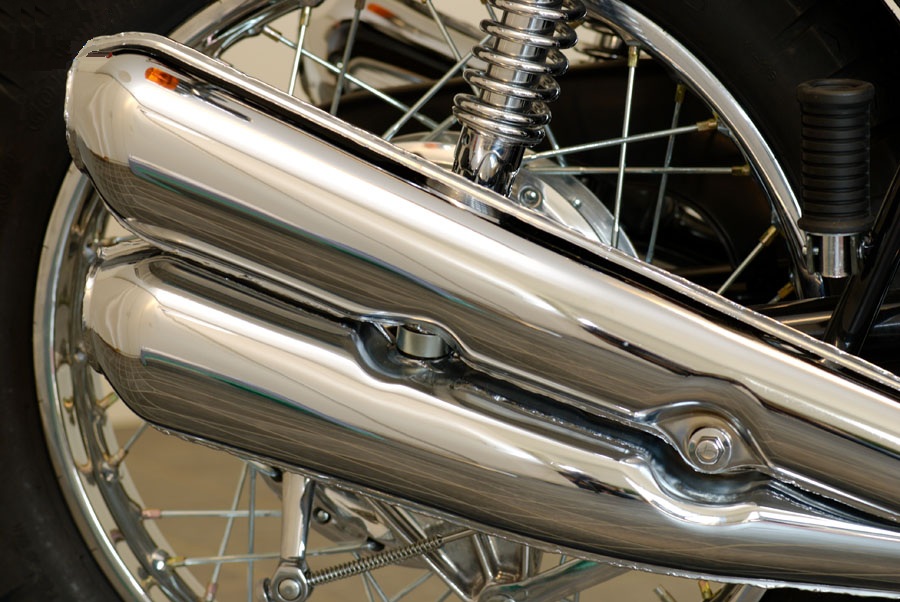
The four into four exhaust system was an artistic masterpiece and was one of the Z1's most striking features.
Each silencer was welded to its relevant downpipe before being chrome plated.
The frame was a duplex cradle design made of tubular steel finished in gloss black.
The frame number, beginning 'Z1F' was stamped into the headstock.
The riders footrests on US models were of the folding type. They were fixed on UK models.
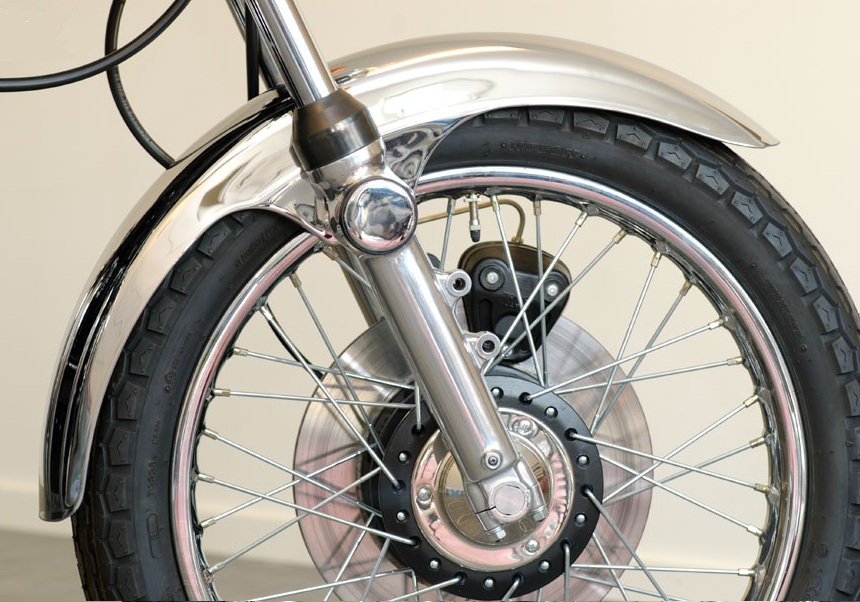 The front fork sliders were chrome whereas the fork legs had an alloy finish.
The front fork sliders were chrome whereas the fork legs had an alloy finish.
US models had a cicular orange reflector at the top of the fork leg on both sides of the motorcycle.
The reflectors were replaced by aluminium discs on the UK model.
The front wheel comprised of a 19 inch Takasago chrome rim laced to the black painted hub with forty zinc plated spokes.
A single hydraulically operated 296mm disc brake on the left side of the motorcycle was standard. Twin discs were offered as a factory option.
The standard front tyre fitted to the Z1 was the 3.25H x 19 4PR Dunlop Gold Seal.
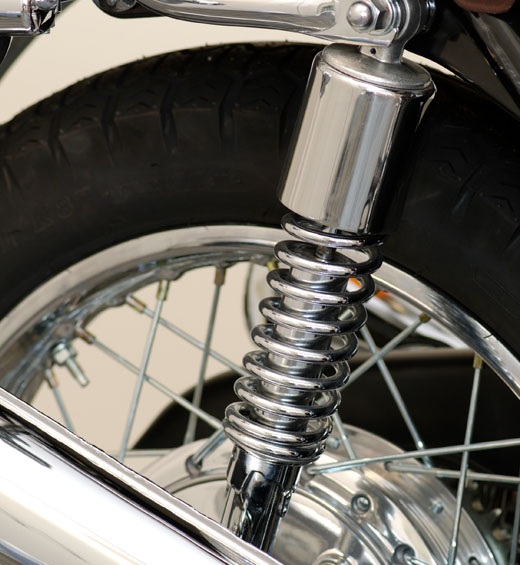 The rear shock absorbers were chromed.
The rear shock absorbers were chromed.
US models had a circular red reflector fastened to the upper part of the rear shock absorber, again on both sides of the motorcycle.
The UK model shown here did not have the reflectors.
The rear wheel comprised of an 18 inch Takasago chrome rim laced to the alloy finish hub with forty zinc plated spokes.
A 200mm diameter single leading shoe drum brake was standard. The standard rear tyre was the 4.00Hx18 4PR Dunlop K87 Mk II.
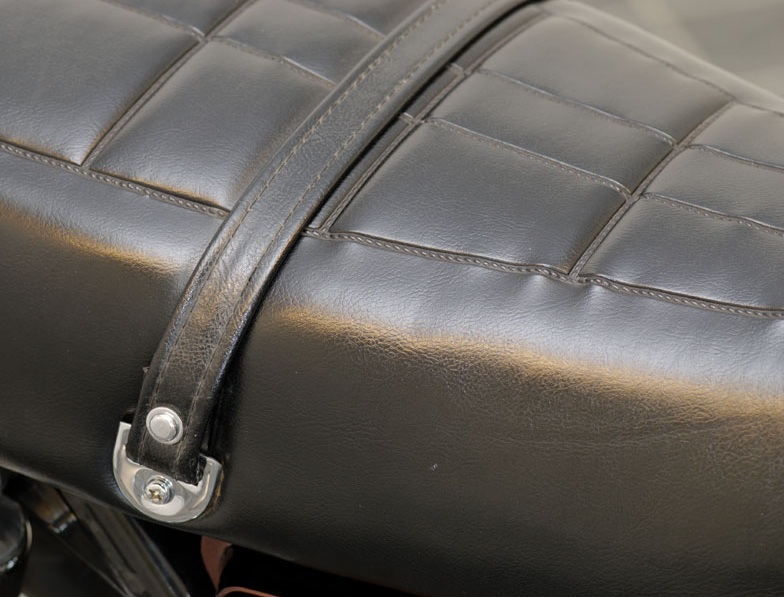
The seat pattern on US models was the same as that on the UK model, however the UK model also featured a leather strap across the mid point of the seat.
The Nippon Denso instruments on the Z1 comprised of a speedometer on the left and a tachometer on the right. The speedometer was calibrated to 160mph in increments of 20mph. The tachometer was calibrated to 12000rpm with the redline starting at 9000rpm.
Between the two gauges was a console featuring the ignition key barrel and four instrument warning lamps, each with a descriptor above the lamp. They showed, from left to right, NEUT (green), FLASH (orange), BEAM (blue) and OIL (red).
All Z1s featured a chromed rear mudguard. This was shorter on US models than on the UK model. Many UK models have since been fitted with the sportier looking US rear mudguard.
